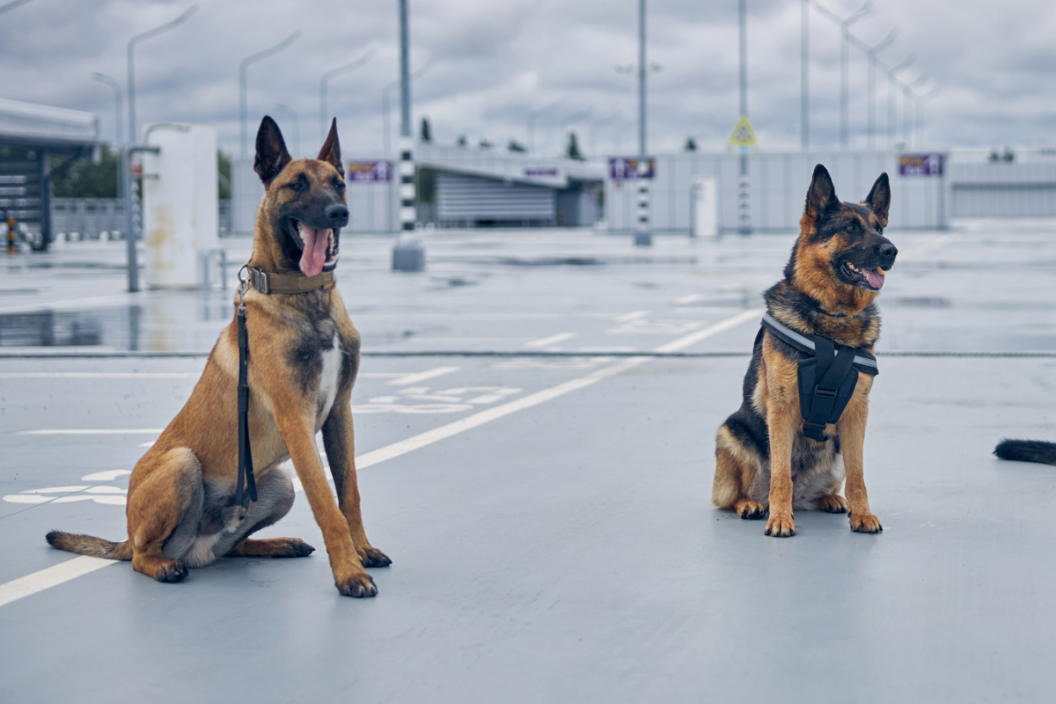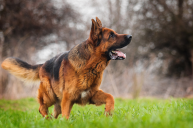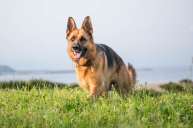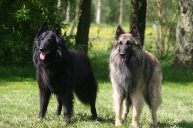"Is that a Belgian Malinois or German Shepherd?"
As the Belgian Malinois gains popularity, many dog owners are learning of this breed for the first time for one main reason: with a quick glance, they are easily confused with the ever-popular German Shepherd. Although these two breeds look very similar and are used for the same jobs, they are actually very different.
For starters, these two working dogs are very different in personality. The Belgian Malinois is an outgoing, high-energy, and confident dog. Belgian Malinois are very emotional and not afraid to express their feelings, which affects their actions greatly. This leads us to their temperament towards people and other animals — Because they are such emotional dogs, they become attached to their families and love to express their affection. This can be a problem, however, as an emotional personality can lead to them being overprotective of their family and being uncomfortable if/when strangers approach their loved ones.
The Belgian Malinois often do not do well in multi-pet households, especially if there are small animals. Because of their high prey drive, Belgian Malinois love chasing smaller pets like cats, rabbits, and hamsters. They also get very jealous and will act assertively towards other pets, including dogs.
On the other hand, German Shepherds are generally more reserved and less confident. German Shepherds can be emotional, but they don't express their feelings as vividly as the Malinois does; this makes them a better candidate for living in a home with children, as they won't get overly protective or jealous. German Shepherds are known to do well around other pets, as long as there are proper introductions and early socialization occurred. The breed isn't recognized for a very high prey drive, so this makes them work well in households with small pets, too.
In short, the German Shepherd's temperament is a calmer, more tranquil version of the Belgian Malinois.
Size

The average Belgian Malinois and German Shepherd are similar in height, standing at around 22-26 inches tall. One major difference, though, is in their weight. Fully-grown Belgian Malinois average between 44 and 66 pounds, while German Shepherds weigh somewhere between 50 and 90 pounds on average. You also notice that the Belgian Malinois's body is generally leaner while German Shepherds are usually thick and more sturdy overall.
Coat & Color
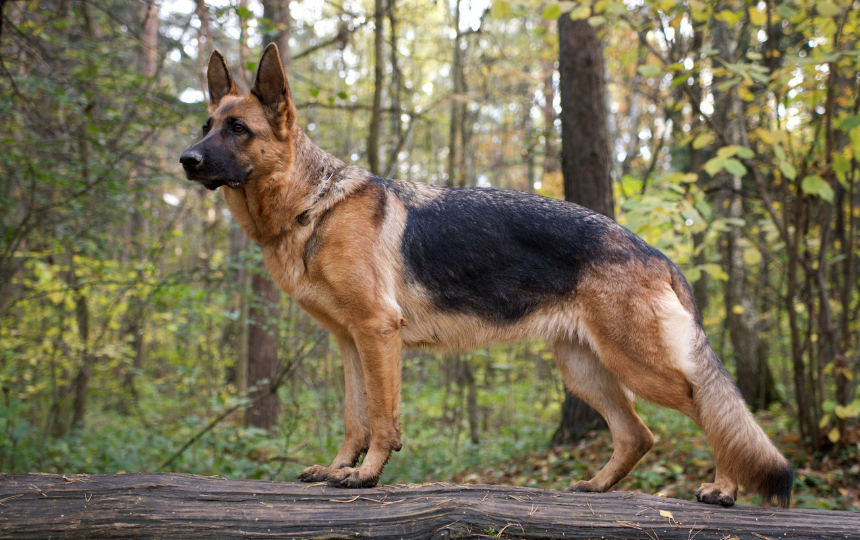
Belgian Malinois and German Shepherds do have similar coat types. Both breeds are double-coated, meaning they have an undercoat and topcoat, or guard coat. The undercoat, as its name suggests, is underneath the top layer of fur. It keeps your dog warm in the winter and falls out as the warm weather approaches. The undercoat is typically a light color in both breeds and very fluffy. The topcoat acts as a shield and keeps dirt and moisture out and is usually a little rough in texture. Because they are double-coated, both breeds require a lot of grooming, especially during "shedding season" (usually spring and fall).
There are exceptions, however. Some German Shepherds are born with a recessive gene, resulting in them having long fur.
Color is another area where these breeds can be easily confused. Both the Belgian Malinois and German Shepherd are known to have coats ranging from black, tan, silver, and black-and-tan. The Belgian Malinois can also have fur that is light fawn, dark fawn, mahogany, black, silver, or a mix of these colors. German Shepherds can have fur that is white, liver, blue, gray, black and red, black and white, and sable.
One quick way to remember a potential difference is to look for a black "mask" covering the muzzle and ranging up through the ears — All Belgian Malinois have a black mask that typically covers the muzzle and up to the ears. Though seen in many German Shepherds, their "mask" is part of a recessive gene, and therefore is dependent on its parents and lineage to be present.
Life Expectancy
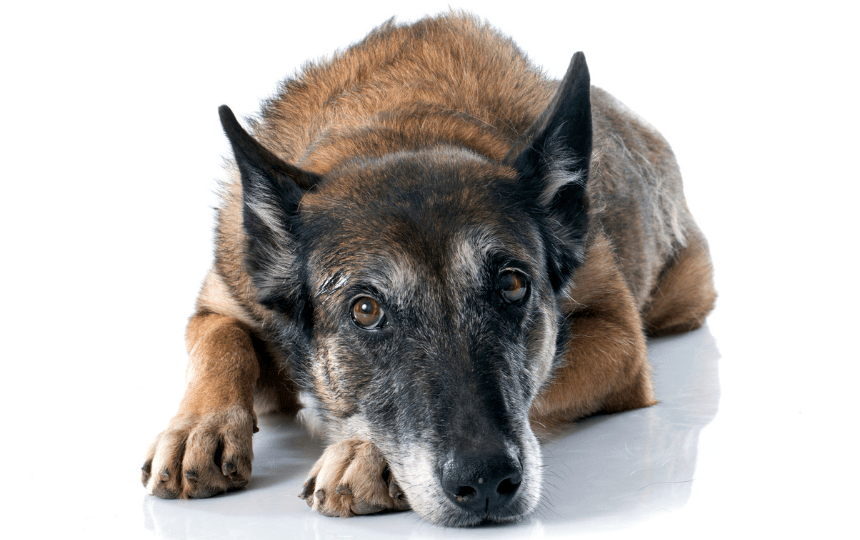
Lifespan is one of the biggest differences between these two breeds. The average Belgian Malinois lives to be 14-16 years old, while German Shepherds typically live to be 7-10 years old. This big difference in life expectancy is because of each breed's activity level and overall health. Belgian Malinois are very active and healthy dogs, recognized often as one of the healthiest dog breeds in the world. Even if they work steady jobs or serve as a police dog, German Shepherds aren't as active as Belgian Malinois and suffer from a wider array of hereditary diseases and health issues.
Original Purpose

Photo by Keystone-FranceGamma-Rapho via Getty Images
The Belgian Malinois and German Shepherd were both originally bred to be herding dogs. As World War I approached, people realized the potential of both breeds to fight alongside soldiers. German Shepherds and Belgian Malinois made their military dog debut, serving as messengers and assistants, aiding in pulling equipment and delivering ammunition. Since then, these dogs make up most of the military and police K9s around the world.
Fun Facts
To conclude our comparison of the Belgian Malinois and German Shepherd, check out some more fun and interesting facts about each breed!
Belgian Malinois
- They have been part of the New York Police Force for over 100 years.
- The Belgian Malinois is named after the city and country it originated in: Malines, Belgium.
- The average Malinois can run as fast as 30 miles per hour!
German Shepherd
- During World War I and II, many countries tried changing the name of things including the word "Germany" — The United States began calling the breed "Shepherd Dog," while England changed its name to "Alsatian."
- They are one of the most popular dog breeds in the United States, ranking No. 2 in popularity out of 193 breeds registered with the American Kennel Club.
- The first seeing-eye dog was a German Shepherd named Buddy.
Own a Belgian Malinois or German Shepherd? Share them with our Instagram account for a chance to be featured!
